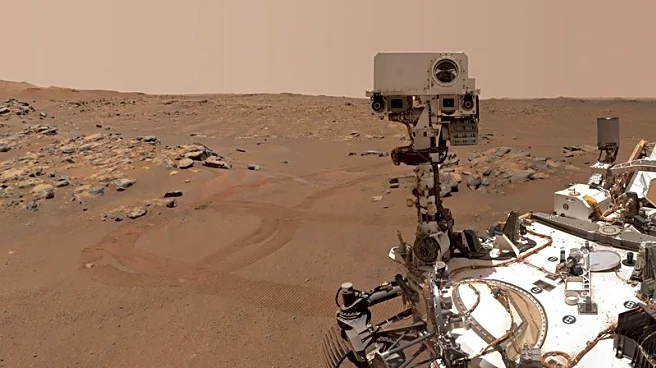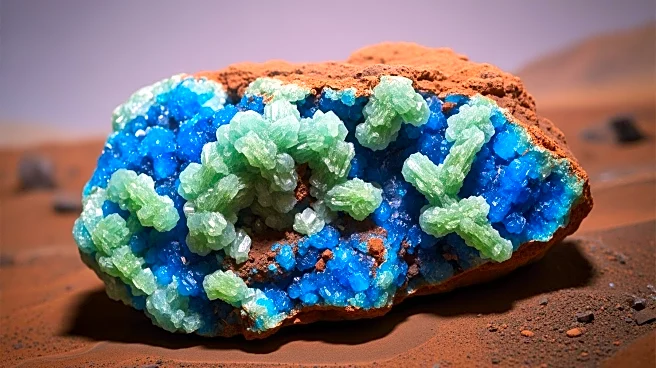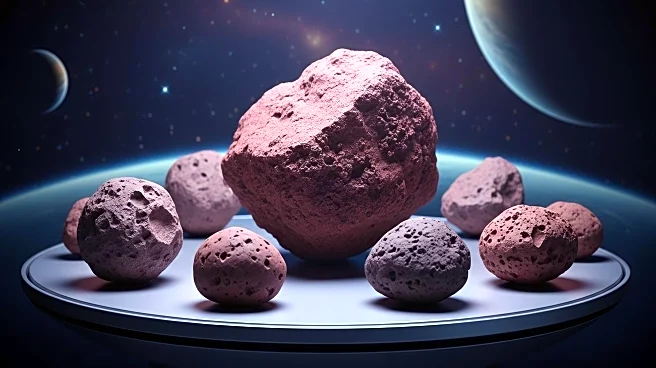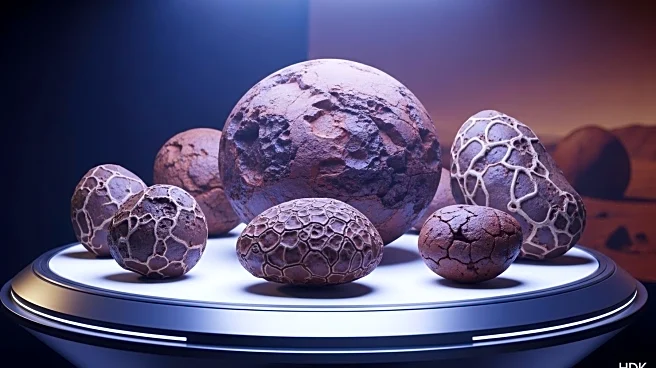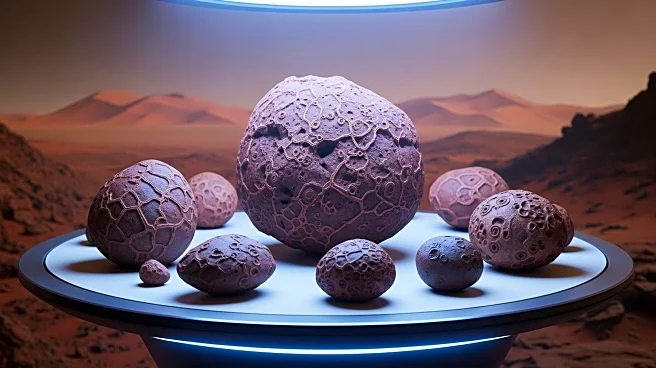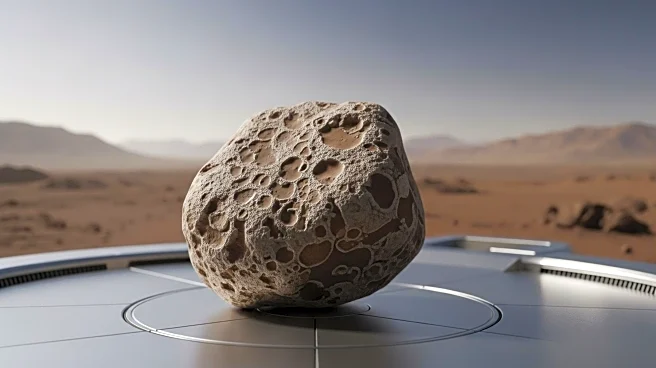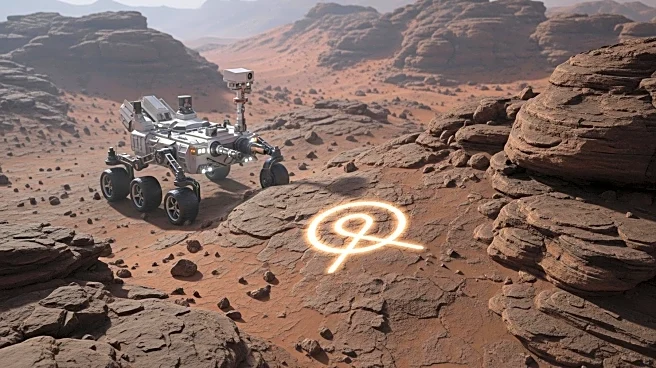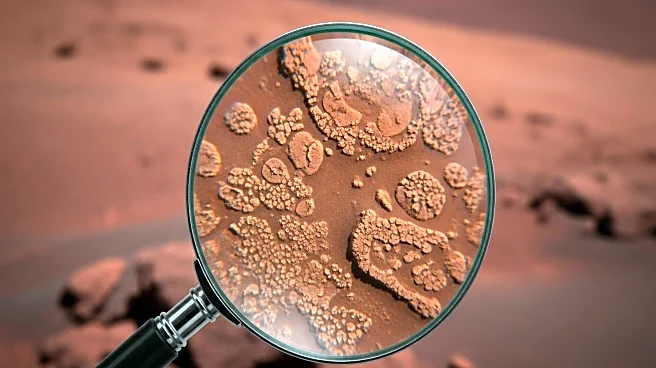What is the story about?
What's Happening?
NASA's Perseverance rover has discovered minerals on a Martian rock that may indicate ancient microbial life. The rover's PIXL and SHERLOC instruments identified vivianite and greigite in a rock named 'Cheyava Falls.' These minerals are arranged in patterns called 'leopard spots,' which could be a biosignature, suggesting a biological origin. Vivianite and greigite are known to form through electron-transfer reactions between sediment and organic matter, potentially indicating microbial activity. However, these minerals can also form abiotically, without life. The discovery is part of NASA's Mars Exploration Program, managed by JPL for NASA.
Why It's Important?
The identification of potential biosignatures on Mars is significant as it could provide evidence of past life on the planet. This discovery could impact future Mars exploration missions and the search for extraterrestrial life. If confirmed, it would be a groundbreaking finding, suggesting that life may have existed beyond Earth. The presence of these minerals could also inform scientists about the planet's past environmental conditions, offering insights into its habitability.
What's Next?
Further analysis is required to confirm the biological origin of the minerals. NASA plans to continue studying the samples collected by Perseverance, potentially bringing them back to Earth for detailed examination. The Mars Sample Return program, initially planned for the 2030s, may be reconsidered for a faster and more cost-effective approach. This could involve a future crewed mission to Mars.
Beyond the Headlines
The discovery raises ethical and scientific questions about the implications of finding life on another planet. It could influence future space exploration policies and international collaboration in the search for life. Understanding Mars' past habitability could also inform strategies for potential human colonization.
AI Generated Content
Do you find this article useful?



